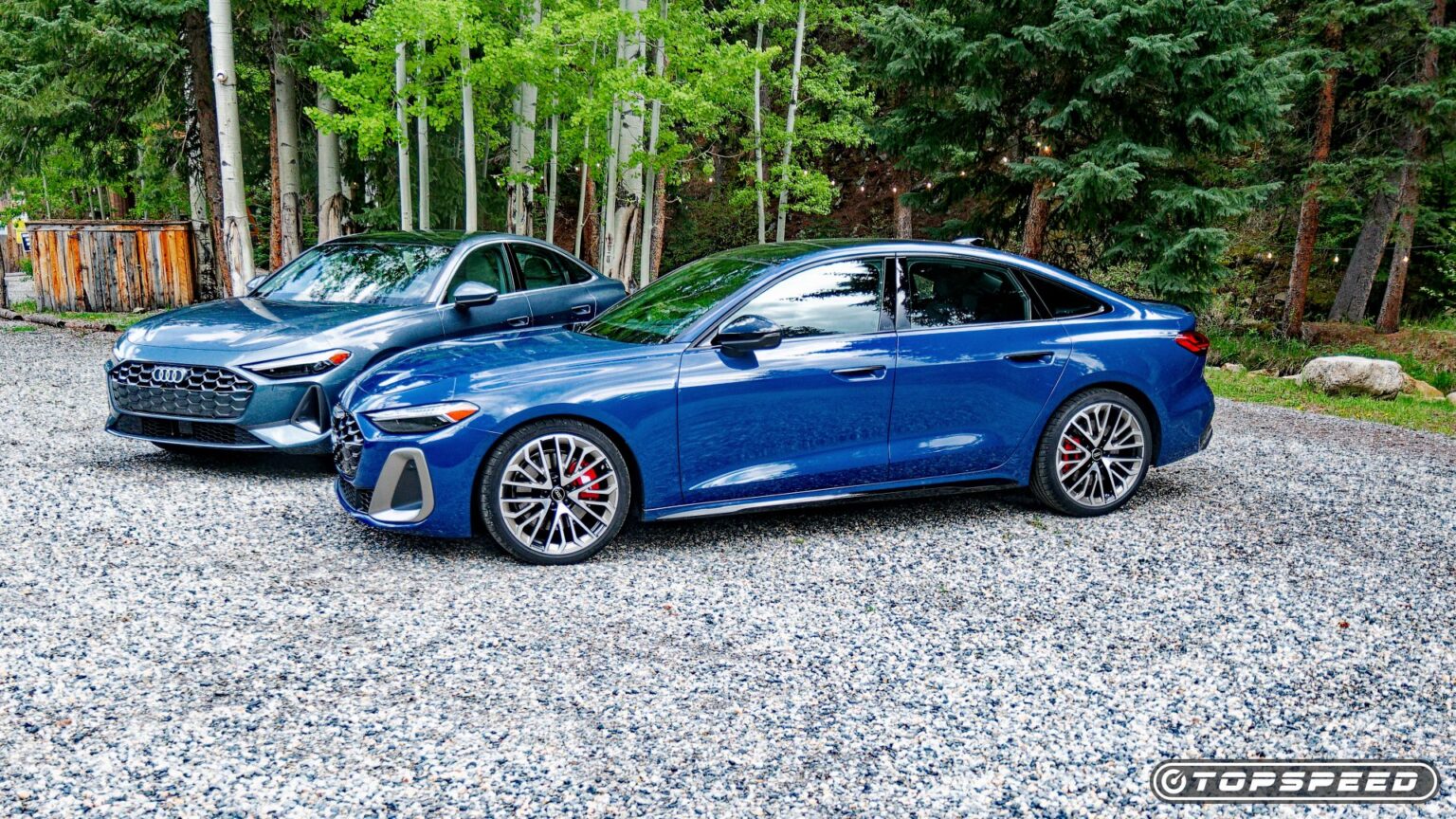Pity German carmakers. Among BMW, Mercedes, and Audi, only the BMW Group (which includes Mini) has seen sales improvements so far in 2025. That’s a narrow improvement, by just 2.7 percent, but in a tariff-bedeviled economy, that’s a major win. Mercedes-Benz’s sales fell a relatively minor six percent through the first half of the year. Minor, because Audi’s facing rougher sledding, with sales off 12 percent, and the hit is being felt across several models all at once. What’s ailing Audi, and what’s the recipe for getting healthy again?
Choice From BMW — Not Audi
Here’s a shocker. BMW’s sales successes so far this year have been on the 2 Series, 3 Series, 4 Series, as well as the X1 and X2. Sales of the larger X7 are essentially flat, and X3 sales are down. What does this mean? People are cautious about spending more on larger, more expensive BMWs—or any cars.
Audi also just revamped the Q5 and SQ5, and both are terrific and good values. Q5 sales also fell so far this year; however, that’s likely a result of the model year changeover.
Look over at Audi instead, and sales of the A3, A4, A5, and A6 are all down. And, actually, Q7 and Q8 sales are up, but the volume there is pretty paltry.
Partly, this isn’t a fair picture. Audi has discontinued the A4, a perennial sales leader, and replaced it with the new A5, which now spans two categories. It’s designed to meet the needs of prior A4 buyers and, since it’s larger, also serves as a family car.
The problem here is that it forces would-be entry-level buyers into the A3, when they might want just a bit more roominess, but maybe don’t want to spend as much on the pricier A5.
Audi also just revamped the Q5 and SQ5, and both are terrific and good values. Q5 sales also fell so far this year; however, that’s likely a result of the model year changeover.
Mercedes—And BMW—Are Making Life Hard For Audi
Mercedes-Benz has just launched the all-new CLA, pointing the way for where all carmakers need to go. That is, to hedge on consumer powertrain choice (and to save costs by reducing complexity), the CLA can be made as a hybrid, gas car, or EV. Mercedes has pulled the plug on sales-tanking models like the EQS, and by this fall, will launch a GLC EV that will look… like a gas GLC. Audi, which has been losing the EV battle to models that offer better range for competitive money, is going to have to adapt by putting out EVs that match the range of rivals. There’s a rumor that Audi will debut an A3-sized electric car next year. That would be good.
It would be even better if they reached a point, similar to BMW with its i4, where they offered the genuine performance of Audi’s gas cars, along with the range EV buyers desire.
TopSpeed’s Take
A new Audi Q3 is set to arrive on our shores next year. This is really critical. Audi, unlike its German peers, lacks sufficient sub-genre models to fill all the gaps. Look at how Mercedes makes a coupe out of every SUV, and now will make an EV out of more core gas cars. Additionally, these rivals are increasingly offering hybrids and PHEVs. In other words, they offer visually distinctive riffs and also PHEV, hybrid, and EV forms of propulsion across every unit they sell.
Audi is significantly hindered by not manufacturing in the U.S., making diversification exceedingly difficult due to tariffs. And on top of that, in a bid to cut costs, they’re also unable to offer multiple powertrains on the same model, the way Mercedes will do with the CLA—or Toyota does with almost everything they make (including with Lexus).
Tariffs aren’t helping, but don’t forget that Audi is part of a far more massive company, Volkswagen AG, which is many orders of magnitude larger than Mercedes and BMW combined. That group has to figure out how to sell cars successfully and profitably in North America.
And by the way, the issue isn’t the cars that Audi does sell here. So far, both new 2025 models are excellent. Now, just do more of that!
Read the full article here


